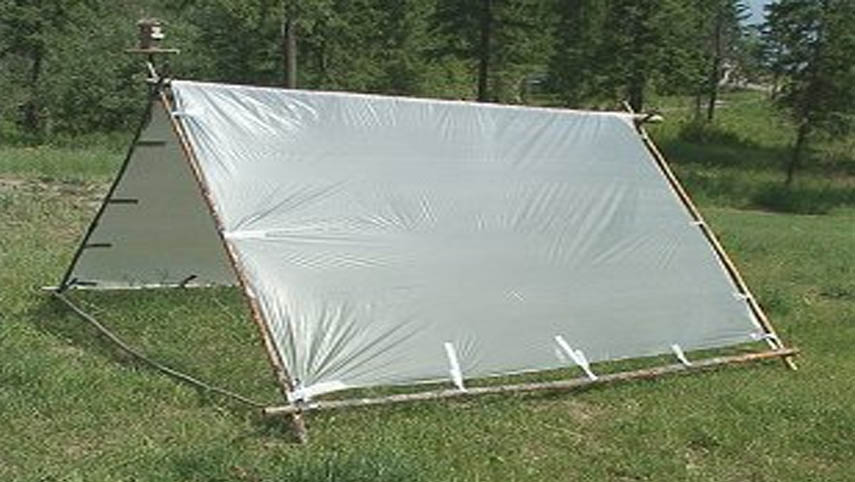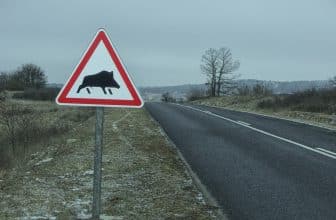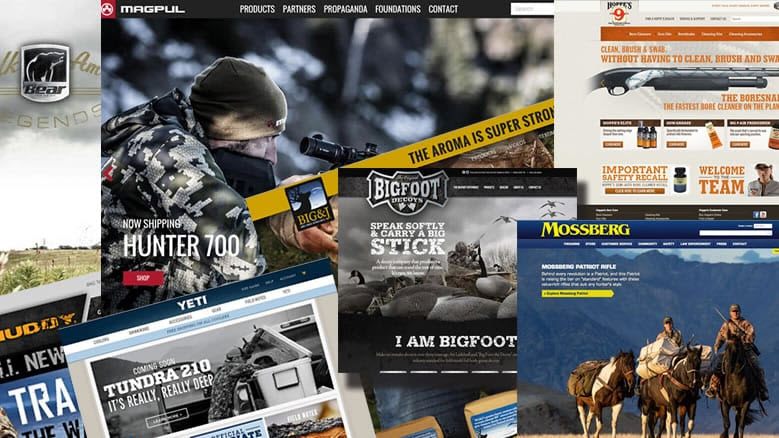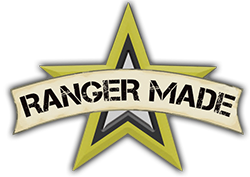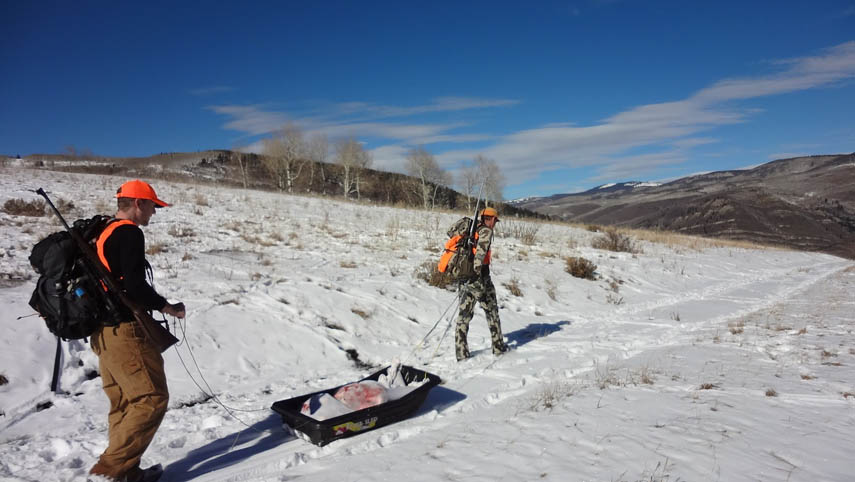
I recently found an old elementary school assignment of mine while rummaging through some old things. The assignment asked students a variety of questions about their favorite things, who they would like to meet if they could meet anybody, and where they plan on living when they grow up. One question in particular caught my eye; “If you had a time machine, where would you go?” What didn’t surprise me was my answer scrawled in my third grade handwriting; “The olden day because of prices.” I guess I’ve always been a traditionalist at heart.
As a traditionalist, I find my hunting goals challenge me differently than most of my hunting friends. Our modern hunting culture revolves more and more around trophy animals. This trophy driven approach has drastically changed the hunting experience for many modern hunters. Now to be sure, I’m not against trophy hunters, in fact I admire them. There’s no way I could pass up animals walking near me hoping to hold out for the big one. It’s not my nature. I hunt to carry on the tradition of our forefathers and pass that legacy on to my children. I am a meat hunter and proud of it.
I come from a family where “bringing home the bacon” takes on a whole new meaning. As a kid I remember many cold November nights helping dad package the elk he had just dropped. In fact many of the men I shadowed while growing up provided for their families by trudging into the snow with a rifle ready to make meat. For my family, fall not only represents a time enjoyable to explore nature, but also a time to stock the freezer with quality meat for the upcoming year. Hunting draws its origins from subsistence hunters roving the land searching for meat to fill their empty bellies. If you think experiencing that cycle sounds appealing, or if you are new to the sport and are not sure where to begin, here are some tips for making the most of your meat hunting experience.
Field Care
Quality tasting wild game begins in the field immediately after locating your harvested animal. Large game animals should be gutted in the field as soon as possible, then packed. Removing the internal organs will help facilitate the most crucial step of meat care; cooling. Heat is your number one enemy when packaging meat, especially in early season hunts. While gutting your animal it’s important not to puncture any of the intestines with your knife. Not only will this let nauseating gases escape, but stomach juices could potentially spoil meat as well. After gutting the next question you will have to ask is whether to skin your animal or not. Hides trap heat so removing them should be considered on early season hunts when temperatures stay above the 50’s. However, skin serves as an excellent boundary between the meat and contaminants you will encounter when moving your animal. You’ll need to decide if the risk of trapped heat outweighs the risk of contamination from dirt, flies, and other debris. A final step that can be taken to reduce the temperature of your meat is to remove the meat from the bone. Bones can hold a lot of heat and cause your meat to spoil from the inside out. Basically, you want to do everything you can to reduce the temperature of your meat quickly. One final note when discussing field care is the condition of the animal before it was killed. With the risk of diseases like CWD a greater threat than in the past, hunters should look for indicators of a diseased animal and contact their local game warden if they have any concerns.
Hanging
So you were lucky enough to find and harvest an animal and you followed proper handling strategies in the field, your next concern lies in your decision whether to hang your meat or not. Hanging meat allows the enzymes in the meat to break down muscle tissue and will result in a tenderer slab of meat on your plate. As with skinning, weather conditions will be your number one variable when making your decision. Ideal hanging conditions are in the low 40’s. Temperatures higher than this create conditions for bacteria to grow, and temperatures below freezing will halt the breakdown of tissue. If your nighttime lows are staying in the 50’s my advice is to skip the hanging stage and get your meat packaged as soon as possible. If you decide to hang your meat the next question is “how long”? You’ll get as many answers to this question as hunters you ask. Some old timers swear by the motto “the longer the better”, while others argue wild game, such as deer, should hang for a maximum for three to four days citing differences between wild game and commercially raised meats in the aging process. In the past I’ve tended to hang my meat for shorter periods of time, generally with weather concerns dictating hanging time more than anything else.
Cuts
Here is where most guys seem to lose confidence in the meat aspect of hunting. “I don’t know what the different cuts of meat are” is a general lament I hear from guys and scares them away from processing. My advice; you won’t ruin the meat if you cut it wrong. Sure, a well-cut piece of meat is ideal, but not cutting the perfect roast out of a hindquarter shouldn’t deter you from learning. As a general rule the muscles that do the least amount of work are the most tender and should be used as steaks. Look to the tenderloins (on the inside of the spinal column) and backstraps (on the outside of the spinal column) for your best cuts. After removing these choice cuts, next look to major muscles in the hindquarters, front quarters, and neck for roasts. These large muscles will require more care to draw out the delectable taste wild game offers and are better suited for longer cook durations of roasts.
At this point you will be left with an array of odds and ends meat clinging to the carcass. The meat that is left generally has more fat and sinew than other cuts, making it less desirable to eat as a steak or roast. Grinding this meat into hamburger offers a great purpose for these tougher cuts. Once the meat is ground it can be eaten as burger, mixed with more fatty meat like pork and made into a variety of products like sausage and brats, or can be dried to make jerky for your next hunting trip. And while discussing fat, its important to remember that wild game fat should be removed for the best tasting result. Wild game fat tends to give the meat an unappealing taste, and is better to be removed with a sharp knife and thrown away.
If you’ve gotten to this point you should be wore out, tired, a bit cranky, and hungry. Lucky for you, you also have a freezer full of tasty and nutritious meat to help you recuperate. Meat hunting not only provides meat, but also compliments ethical hunting practices and promotes appreciation for the animals we love and love to hunt. Utilize this gift from your hunting adventures and you’ll go a long way to experiencing a more full circle cycle of hunting. Who knows, maybe someday you’ll join the meat-hunting crowd who is proud to bring home the bacon.
Page Contents
Be extra careful with your meat!
Meat hunting is both fun and challenging and only those who have dressed their game in the field can really understand it. Among so many things that you should get in your head is safely cut, dress, and store your meat for consumption. The last thing you want is food poisoning from skipping hygienic rules like using a clean knife.

Take health precautions in the field
Preparing your game meat is like any other meat. The main difference is that you do all the hunting and have to do plenty of prep work in the field. Once you get your game, you need to process it as quickly, correctly, and safely as possible. You want to take home the highest quality meat, after all.
Hunt healthy game!
If your game is infected, the meat will be infected as well. Pay attention to what you’re pursuing and make sure that your game is (or at least looks) safe and healthy. You don’t want to bring home a kill that looks sick and not safe to eat.
Chronic wasting disease
A deer that looks confused, dizzy, or emaciated may suffer from a chronic wasting disease—it’s similar to the mad cow disease. A stumbling and thin deer is probably sick as this disease damages the brain and the central nervous system. The meat is contaminated and you shouldn’t eat it.
Injuries
Take a good look at your game. Bucks fight pretty often, and they injure each other with the antlers. The wounds might travel to the spinal column and render the meat infected.
COVID-19
It seems that white-tailed deer can get infected with coronavirus, but the risk for the disease to get to us humans is low. From what scientists know so far, the risk of animals spreading the virus to people is relatively low. If you ask us, it’s better to stay on the safe side and avoid consuming lungs of deer and any wild game.
Don’t forget about the cross-contamination risk
No matter how much we love nature, we must never forget that it’s also full of bacteria. Even if hunting and preparing your game for later consumption seems like a dream come true, you should never forget to keep your meat as clean as possible. You must learn how to get your deer so that you reduce the risk of cross-contamination to a minimum.
Is your knife sharp?
Not only will a dull knife make it difficult for you to cut meat, but it will also drag bacteria through the meat. It’s how you increase the risk of nicking the organs. Make sure that your knife is as sharp and clean as it can be before you make your cuts in the field. You can use some wipes to clean it off as you’re preparing the meat.
Stay away from the organs
Your game’s internal organs are filled with risky gunk to handle like in humans. If you’re seasoning your deer in the file, you should always be sure not to nick the intestines, stomach, and bladder. They’re typically loaded with waste materials you don’t want to touch the meat.
Don’t take home the bad stuff
After taking out the mentioned organs, make sure that you leave them behind. You will risk spreading contaminants and bacteria if you take these organs home. Leave them all in the field and let nature handle them.
Use a tarp
We imagine that you didn’t leave home without bringing a clean tarp with you. You need it to take the game to your vehicle. Place your game on the tarp until you get back home—you don’t want any bacteria to get to the meat during transportation, either.
Clean all surfaces
Once you get home, start by cleaning all surfaces you’re about to use to prepare the meat. Disinfect the surfaces, whether the garage, kitchen, basement, etc. Any bacteria present on the surfaces before you got there could get to the meat and infest it.
Do you fancy aging your meat?
Aging meat is a method for holding carcasses or cuts of meat at 34 to 37 F degrees for one week or two. During this time, the enzymes in the meat will break down the complex proteins in the carcass. Many people like aged meat because it’s typically flavorful and more tender than fresh meat.
We should remind you not to age the game meat carcass if
- You shot it in warm weather without chilling it quickly
- Your game went through a lot of stress before you took the shot and killed it.
- The gunshot areas are extensive
- If the game was younger than one year
- The carcasses have little or no fat covering. If so, aging will dry out the carcasses and the risk of deterioration due to microbial growth is significant.
- The meat will be ground into sausage, so aging becomes useless.
We recommend leaving the hide and keeping the appropriate temperature for aging a carcass. The aging game that has been skinned will cause drying and high weight loss. Therefore, you should age the properly chilled game with the hide on. You don’t need to leave the hide on if you age the meat in a room with high humidity. You take your chances if you don’t use an adequately cooled space—you will cause dehydration or spoilage.
Please don’t ruin the meat by trimming the fat because it’s there to protect the meat while aging. You should only cut the fat to avoid unpleasant flavors that fat may present.
We once again remind you not to pass the two weeks of aging at 34 to 37 F degrees. It’s where tenderization slows down and bacterial slime appears—you will need to trim it.
Cold shortening turns the meat tough and happens when the internal muscle temperature goes down to 32 F degrees in the first 12 hours after the kill. It occurs when you slaughter a carcass under 100 pounds in temperatures below freezing. Remember to thaw and age at 34F degrees the frozen carcasses for two weeks.

How will you do the cutting?
It’s common for freezer locker stores to have power saws and experienced meat cutters to cut and wrap meat. You can also cut your roasts and only take the chops and steaks cut by the professional meat cutter. After all, cutting isn’t the most challenging job.
Begin with hanging the carcass by the hocks or hock tendons. Work from the tail to the neck and split lengthwise along the backbone. Use a saw or chop with a hand ax or cleaver. Make sure that the halves are properly spread when you do the splitting. You want to split the halves into quarters, so cut between the last two ribs and through the backbone.
When you want to cut meat most effortlessly, removing all flesh from bones is the best way. You need to follow along with the natural seams of the muscles. Remove the loins from the back and trim of loose tissue the long, sausage-like piece. Similar to cutting a loaf of bread, cut into steak-sized pieces.
If your game was small, cut twice the needed size. Continue cutting in almost two more and leave the connective tissue to fold out the cuts. It should look like a butterfly.
So you’re back home. What do you do next?
As long as you’re preserving your game accordingly, you should be able to enjoy the high-quality nourishments that game meat provides. Wild meat is perishable, so it needs particular care methods to keep its quality. For many, freezing meat is the most common method to enjoy top-quality meat.
If you’re new to hunting, you might want to write down and memorize the following rules when preserving your game meat:
- Wash your knife, hands, and cutting board as often as necessary. Use warm, soapy water for washing.
- Reduce the risk of cross-contamination by storing raw meat separate from cooked meat.
- Trim fat and uneatable parts from the carcass when you cut it
- You can add at least 15% pork and beef fat to the ground game and at least 35% pork fat with fresh game sausage.
Will you store the meat in the refrigerator?
If you plan to store the meat in the refrigerator for immediate use, you should wrap it in moisture-proof plastic wrap. You can also place it in a clean plastic storage bag. Keep it in the refrigerator and use it in two or three days.
Are you going to freeze your game meat?
All your efforts, time, energy, and money you’ve spent on hunting gear will go down the drain if you don’t make the best out of your meat. From proper dressing in the field correctly freezing to maintaining the quality and safety of your game meat, you should always go by the book with your game meat.
Please consider the basic guidelines when you freeze your game meat:
- Freeze meat only when it’s fresh and in top condition
- Reduce the risk of “freezer burn” and use good-quality freezer paper. You can use laminated freezer wraps, heavily waxed freezer wrap, or tough aluminum foil for a moisture/vapor-proof wrap. You can also use freezer-weight polyethylene bags.
- Divide your game meat into meal-size quantities.
- You can also use a vacuum sealer and compatible packaging for small cuts of meat.
- Label your packages with the date and contents
- Press the packages to remove all air before you seal them
- Freeze and store your packages at 0F degrees and even lower
- Don’t overload the freezer and freeze the amount that will become frozen within 24 hours.
- Avoid storing your game meat for a long time. You shouldn’t keep frozen meat for more than eight months. Cured or seasoned game shouldn’t be stored for more than four months, even if it’s frozen.
You might not know this, but the hunting laws in most states recommend using the wild game before a new season begins. Always stay informed about the amount of game you’re allowed to keep and the length of time you can store it.
How should you freeze your game meat?
Here are the steps to take to pack your meat for freezing.
- Wrap the meat in plastic cling wrap.
Wrapping is an affordable choice to store and freeze your game meat. You can first cut meat/burger and wrap it in clear plastic. Continue wrapping it again in freezer paper (the dull side is for easy writing, and the shiny side holds in moisture). You can use tape to shut it. Double wrapping will stop the cold air in the freezer from directly contacting the meat and not cause a freezer burn.
- Put the wrapped meat in the center of the freezer paper
- Get the opposites sides of the paper and fold down the edges (1in deep is enough)
- Eliminate air as you fold down the edges
- Form a V by folding the ends as tightly as possible
- Flip your meat package. The seam should be down. Continue with folding the ends over each other.
- Use freezer tape to seal the edges.
- Write down the date and the contents on the label.
Will you use a vacuum sealer?
Vacuum sealing is a reliable method to store your game meat because it reduces the risk of freezer burn and spoilage. Here are some rules to remember when using a vacuum sealer:
- Read and follow the manufacturer’s recommendations when selecting the packaging materials and vacuum conditions.
- Don’t use films or inappropriate materials when you do the vacuum sealing. The heat sealer might not be rated to melt the plastic enough to obtain an airtight seal/
- When you use freezer bags, press every package to remove as much air as possible before closing it.
Air is the no.1 enemy with freezing meat
Whether you freeze game meat, steaks, roasts, or burgers, you don’t want the air inside the package so that the product remains fresh and lasts for a long time. Vacuum seal packaging is the surest way to know that you have removed all air from your packages. Even if a vacuum sealer means another spending, you should do it if game hunting is life. It helps you have fresh game meat that lasts twice as long.
Prevent rancidity and freezer burn
When you freeze your game meat, you have to take cautious steps to avoid rancidity and freezer burn.
Rancidity
It’s a chemical change that gives an off-flavor because the meat has been exposed to air for a long time. The best way to avoid rancidity is to use packaging materials that don’t allow air to reach the meat. Also, you have to eliminate as much air as possible from the packages before you freeze the meat. Vacuum packaging will also prevent rancidity.
Freezer burn
Freezer burn is a grainy spot where the meat seems to be tough and dry. Excess moisture loss is the leading cause; it leads to the formation of ice crystals. Freezer burns won’t cause illness, but they will alter the quality of the meat since they cause off-flavors. Properly packaging the meat and cooling it quickly will reduce the risk of freezer burn.
Try these tips to get the best results with freezing your game meat!
As a hunter, you learn that you can never know too much about it. Since you cannot learn everything from the books and personal experience, you should keep in mind as many tips as you can. Here are some about freezing the meat with excellent results:
- Keep your freezer in a cool and dry place with efficient ventilation.
- Seek that the freezer sits level and don’t overload it. The freezing rate will slow down and alter the meat quality if you overload it.
- Never place your freezer in direct sun or close to a water heater/stove. If so, it will be difficult for the freezer to preserve the temperature at 0 F degrees or lower.
- Don’t stack the packages in just one area of the freezer, but spread them out. This way, air will circulate among the packages more efficiently and speed up the freezing.
- You should store the packets in a single layer at first to support fats freezing throughout. The centerpieces will become insulated and not properly freeze if you stack the packages.
- If you store game meat in the refrigerator, eat or freeze them within 2 or 3 days. Use an appliance thermometer so that the fridge remains at the correct temperature.
- Store the meat separated from other foods in the refrigerator not to contaminate other foods.
How should you thaw frozen meat?
Thaw your game meat in the microwave oven or refrigerator. Game meat is typically high in bacteria and you risk bacteria growth if you thaw it at room temperature. Needless to say, you must cook the thawed meat right away. The rule applies to all foods that you’ve thawed in the microwave. If you thaw refrigerated meat, you should use it in two days top.
How will you cook your wild game?
Game animals are typically active animals, so their muscles are pretty lean. When compared to poultry and domestic meat, game meat will feel drier. You will need to use cooking methods to give flavor and juiciness to your game meat.
Try our cooking tips next time you want to cook your game meat:
- If you didn’t remove the fat when you cut the meat, you should do it before cooking it. Wild game fat gets rancid quickly, generating the specific “game” flavor.
- Add various fats so that your game meat doesn’t get too dry. To rub your roast, you can use butter, salt pork, margarine, bacon fat, beef suet, sweet/sour cream, and vegetable fat. It will add richness, moisture, and a tasty flavor.
- Use an ice pick or a skewer to insert slivers of uncooked salt pork/bacon in your game meat. Add beef or pork fat to the inside and outside of the roast if you make rolled roasts. Do it before you tie it.
- Improve flavor by basting very lean cuts with extra fat.
- You should always serve the game meat either very hot or freezing. You don’t want to eat it lukewarm because it has a greasy taste.

Try out our suggestions to cook your game meat
If you’re new to cooking your game meat, our suggestions will come in handy, for sure.
Roasting a rib or loin
Game meat cooks faster than beef, so you might want to use a thermometer for best cooking results. The internal temperature when cooking game meat should always range between 160 and 170 F degrees.
- Remove all game fat and rub the meat with bacon drippings (or similar).
- Use salt, pepper, and favorite herbs to season your meat
- Place it on a roasting rack in a pan with no lid. Make sure that it’s bone down.
- Place bacon strips on the top of the roast to add more flavor.
- Baste your meat with as much fat as necessary, without ever adding water.
- Roast uncovered at 300F degrees (give 20 to 25 minutes per pound).
Broiling rib steaks, chops, or loin
- Preheat the broiler to 350F degrees
- Trim all-natural fat from chops or steaks
- Use bacon/other fat to rub your meat and season it
- Place the chops/steaks on the broiler rack so that the top surface is 3 to 5 inches below the heat source. It depends on how thick your cut is.
- Leave the oven door/broiler door open a few inches
- Pay attention to the meat. If it spatters or smokes, it means that the flame is too high or that the meat is too close.
- Brown the meat on both sides.
- A one-inch steak requires 15 to 20 minutes of cooking.
- Use some butter to baste it and serve it all at once.
Pan broiling loin/chops/rib steaks
- Partially heat a heavy frying pan
- Use a small amount of fat or suet to rub the medium-hot pan
- Cook the meat quickly. The heat should be medium-high.
Stewing (neck, shank)
- Begin with cutting your meat into one-inch cubes
- Use flour and season to sprinkle the meat
- Cook in medium-hot fat until the meat becomes brown on all sides.
- Add boiling water until you cover the meat and cover it tightly
- Simmer until the meat becomes tender. It can take up to three hours.
- Make sure not to boil the meat.
- The meat will become tender if you add the vegetables long enough before serving the meat.
Braising less tender cuts (leg or round, chuck or shoulder, plate or breast)
- Use salt, pepper, and herbs to season your meat
- Rub it with some flour
- Brown all sides in fat (medium hot)
- Add 2/3 cup of water and cover it tightly
- Simmer it until the meat becomes tender. It can take two to three hours.
- Turn the meat from time to time and add water, if need be.
Marinades
Marinades are great because they can enhance, tenderize, or hide game flavors according to your preferences. Use one of the following marinades to cover your meat. Let it sit in the refrigerators for at least 24 hours. After that, you can roast, broil, or braise your meat.
Here are some marinades to try with your game meat:
- French dressing, tomato sauce, tomato juice, or undiluted tomato soup
- 2 cups water, 2 cups vinegar, ½ cup sugar
- 1/2cup cooking oil, ¼ cup vinegar, ½ teaspoon pepper, ¼ teaspoon garlic salt
- Fresh juice (pineapple, lemon, or a mixture of several juices)
- Two cups water, 1-2 tablespoons sugar, 2 cups vinegar, four-bay leaves, one teaspoon salt, 12 whole cloves, three medium-sized onions (sliced), one teaspoon allspice.
- Salt and pepper, garlic salt, and equal parts of Worcestershire sauce/two steak sauces
Why is wild game meat good for us?
Is wild game nutritionally better than commercial meat? Is it worth spending money, time, and energy to hunt, cut, season, freeze and cook your game meat? We bet that avid hunters will not even hesitate to give us a straight answer with a big “yes.” For those of you who still sit on the fence about meat hunting, the following benefits of game meat might help you decide.
It’s loaded with omega-3
Research at Purdue University discovered that wild game (deer, elk, and antelope from the Rocky Mountains region) has a high amount of omega-3 fatty acids and a low ratio of omega-6 to omega-3 fatty acids. These fatty acids are in the muscle meats and surpass the grass-fed beef equivalent.
If you don’t know by now, omega 3-s and omega-6s are fundamental for balanced nutrition. Too much of these acids increases the risk of various health conditions and chronic diseases. However, the mixture of fats in wild game is balanced and has a low level of cholesterol, which reduces the risk of chronic diseases.
It’s a lean protein
Wild game meat is a lean protein with low-fat content. Wild animals have an active life and a specific diet instead of domestic livestock with a heavy grain and corn-based diet. Wild animals don’t need antibiotics on a regular basis, roam freely and naturally breed since they’re not confined. Wild meats have high iron, protein, and B vitamins instead of pork and beef meat.
Our grandparents were healthier because they weren’t eating meat stocked with steroids. Wild game meat is healthy and lean.
It’s a source of iron and zinc
The wild game contains a lot of zinc and iron, essential for balanced health. We need iron for oxygen to get to the tissues and organs, whereas zinc strengthens our immunity system.


